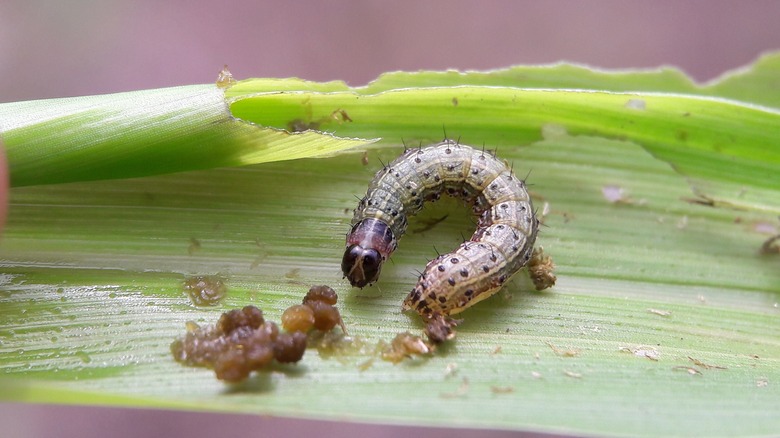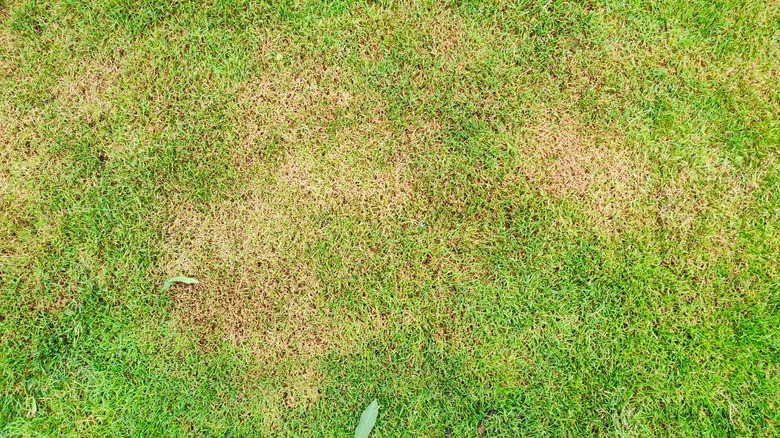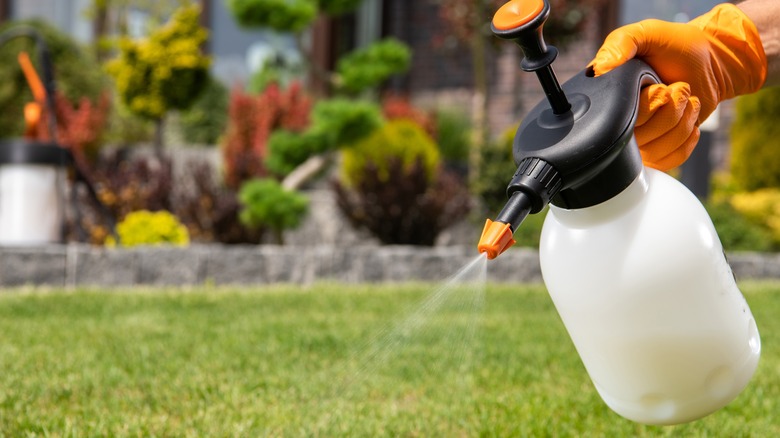How To Identify Armyworm Damage & Get Rid Of Them Without Harming Your Leafy Friends
Considering the amount of work that goes into growing a lush turfgrass lawn, the possibility of it all being destroyed in a matter of hours can be devastating. While the term armyworm is used to describe a few different kinds of destructive caterpillars, one of the most well known in North America is the fall armyworm (Spodotera frugiperda), a notorious pest that decimates lawns, hay fields, and corn crops overnight. Discouraging armyworm moths from laying eggs in and around your lawn and quickly noticing and treating any signs of armyworm infestations are essential to keeping your grass from becoming a casualty of this army.
While fall armyworms are only around an inch long, they can do a shocking amount of damage, with a single adult moth able to lay 1,000 eggs. Once these very hungry caterpillars hatch from their eggs a few days later, they quickly begin looking for food, which could include your lawn. Armyworms can be extremely destructive, but they aren't impossible to control. While insecticides like permethrin are often used, less environmentally damaging products like Bacillus thuringiensis (BT) and neem oil can also be effective against these pests and are less likely to damage other beneficial insects in the process as long as you follow the directions carefully.
Controlling and preventing armyworms
Armyworm eggs and caterpillars can make tasty snacks for many wasps and other predators, so planting alyssums and other flowers that attract scary sounding but beneficial parasitic wasps could help stop armyworm problems before they even start, all without damaging your plants or your pollinators. Keeping your lawn at the right height by not allowing it to grow much past 3 inches can also prevent armyworm infestations from taking hold. Having a healthy lawn can go a long way towards keeping armyworms away.
Keep a close eye on your lawn to catch any armyworm damage early. A small brown patch one day can quickly become an entire dead lawn. If there is an area of your lawn you suspect may be infested by these destructive caterpillars, then pouring a mix of a few teaspoons of lemon dish soap and a gallon or two of water onto the area will cause the worms to come to the surface, helping to confirm or deny your suspicions. If it appears there are only a few armyworms, then physically removing them may be enough to save your lawn, but if the problem is more serious, then additional methods may be necessary.
Using neem and BT against fall armyworms
Two of the best pollinator- and plant- friendly methods for dealing with fall armyworms are neem extract and BT When used according to instructions, products like neem oils and powders are unlikely to cause any harm to mammals, bees, or plants. Instead, they only harm insects who eat a treated plant, so as long as you only treat areas where you strongly suspect fall armyworms are feeding, there should be little harm to other insects. Neem will likely require repeated applications to fully treat your armyworm problem and should generally be reapplied every week or two.
BT is a bacteria that specifically targets the larvae of some insect species. While it is relatively targeted, it can harm other caterpillars as well, so be sure to avoid using it near host plants for native butterflies or moths and treat only the necessary area. To use BT to treat armyworms, be sure to buy a strain of the bacteria that is recommended for use against caterpillars and apply it to the infested area of your lawn according to the instructions. Be prepared to do a few applications before your armyworm problem is resolved, but it should be worth it to see your lawn thrive again.


